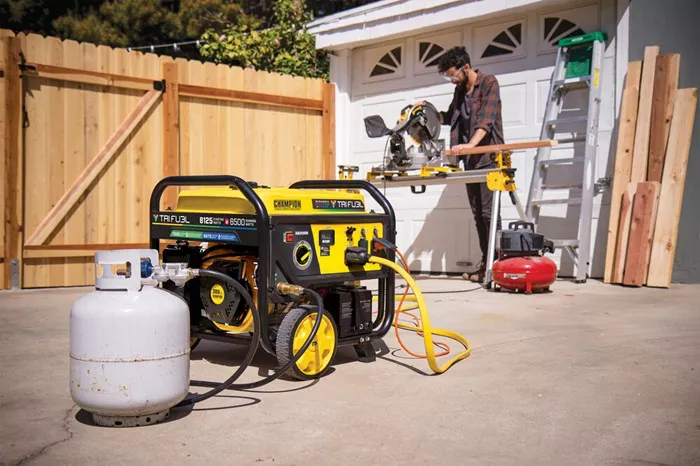In today’s world, ensuring a reliable power supply is crucial for maintaining comfort and safety in our homes. Power outages can be disruptive, impacting everything from daily routines to critical systems like heating and cooling. To prepare for such situations, many homeowners consider investing in a whole-house generator. However, determining the appropriate wattage required for such a generator involves a detailed understanding of your household’s power needs. This guide provides a comprehensive overview of how to calculate the wattage required for running your home, helping you make an informed decision about your backup power options.
1. Understanding Your Household Power Needs
To determine the appropriate wattage for running a house, it’s essential to first estimate your household’s total power consumption. This involves a comprehensive assessment of the essential appliances and systems that will need power during an outage.
Assessing Essential Appliances
Begin by listing all the crucial appliances and systems that you depend on during a power outage. This list typically includes items such as refrigerators, heating or cooling systems, lighting, and water pumps. Each of these appliances has different power requirements, which must be considered to ensure you have adequate backup power.
Calculating Appliance Wattage
Next, check the wattage requirements for each of these appliances. The wattage is usually specified on the appliance’s label or in the owner’s manual. For a more precise calculation, here are some common examples:
Refrigerator: A standard refrigerator typically consumes between 100 to 800 watts, depending on its size and model. It’s crucial to consider that while it may use less power to run, it requires a surge of power to start.
Central Air Conditioner: This appliance is a major power consumer, requiring between 2,000 and 4,000 watts. The exact requirement depends on the size of the unit and its cooling capacity.
Electric Furnace: An electric furnace can draw a substantial amount of power, ranging from 10,000 to 25,000 watts. This high demand means it’s one of the most significant considerations when sizing your generator.
Well Pump: If your home uses a well for water supply, the pump will need between 1,000 and 2,000 watts to operate.
Understanding these wattage requirements helps in compiling a list of necessary power levels to keep your household running smoothly during outages.
2. Total Power Calculation
Add Up Wattage
Once you’ve determined the wattage requirements for each essential appliance, add these figures together to get the total power requirement. For instance, if you have a refrigerator that uses 600 watts, a central air conditioner that needs 3,000 watts, and a few lights that require 200 watts, your total power consumption is 3,800 watts.
Account for Surge Power
It’s also important to consider surge power, which is the additional power required to start certain appliances. Many appliances need a higher wattage to start up than they do to run continuously. For example, a refrigerator might need a surge of 1,500 watts to start but only 600 watts to keep running. Your generator should be able to handle these surges to avoid overloading.
See also: What Is The Average Cost Of A Metal Roof?
3. Selecting the Right Generator
Standby Generators
Standby generators are designed for permanent installation and are connected directly to your home’s electrical system. They are capable of powering your entire house or specific critical systems during an outage. These generators typically range from 7,000 to 20,000 watts or more, providing a robust solution for most households. They are ideal for comprehensive backup power but come with a higher upfront cost and installation requirements.
Portable Generators
Portable generators offer a flexible solution for temporary power needs and usually range from 2,000 to 10,000 watts. For a whole house, you would need a portable generator on the higher end of this range. However, portable generators might not be suitable for every household due to their limited capacity and the inconvenience of having to manually connect and operate them.
4. Consider Your Lifestyle
Peak Usage
Evaluate how often you need to run all your appliances simultaneously. If your household typically uses only a few appliances at a time, you might be able to opt for a generator with a slightly lower wattage. Understanding your peak usage patterns helps in choosing a generator that balances cost and functionality.
Future Needs
Consider any future changes to your household that might affect your power requirements. If you plan to add more electrical appliances or systems, such as a new heating system or additional electronics, factor in these future needs when selecting your generator. This foresight ensures that your generator will be capable of accommodating any increased power demands.
5. Professional Assessment
For the most accurate recommendations and installation, consulting with a professional electrician or generator installer is highly advisable. These experts can conduct a thorough assessment of your specific needs, taking into account factors like your home’s electrical layout and your lifestyle. They can guide you in selecting a generator that fits your requirements and handle the installation to ensure safe and reliable operation.
Conclusion
Determining the correct wattage for a whole-house generator is crucial for ensuring a reliable power supply during outages. By understanding your household’s power needs, calculating total and surge power requirements, and choosing the right type of generator, you can make an informed decision that best suits your home. Whether you opt for a standby or portable generator, ensuring it meets your current and future power needs is essential for maintaining comfort and safety. For precise recommendations tailored to your specific situation, consulting with a professional is always the best approach, ensuring you have a dependable backup power solution when you need it most.
Related Topics:

